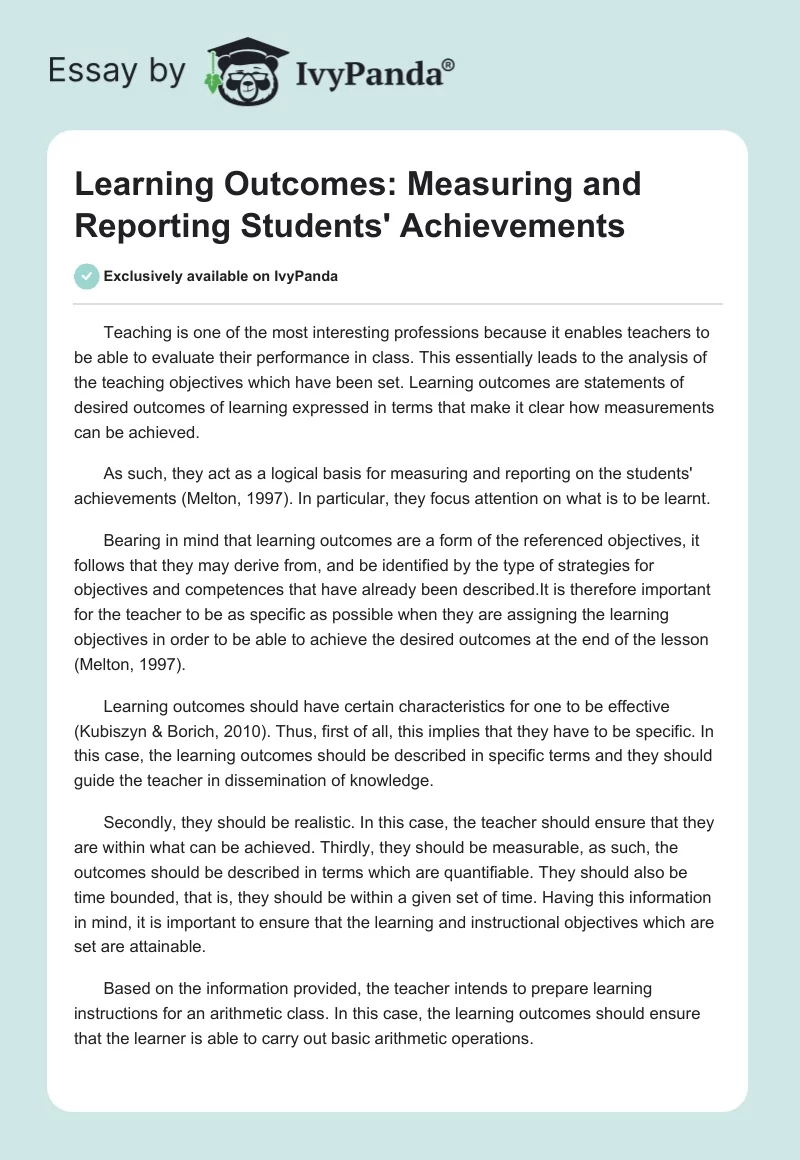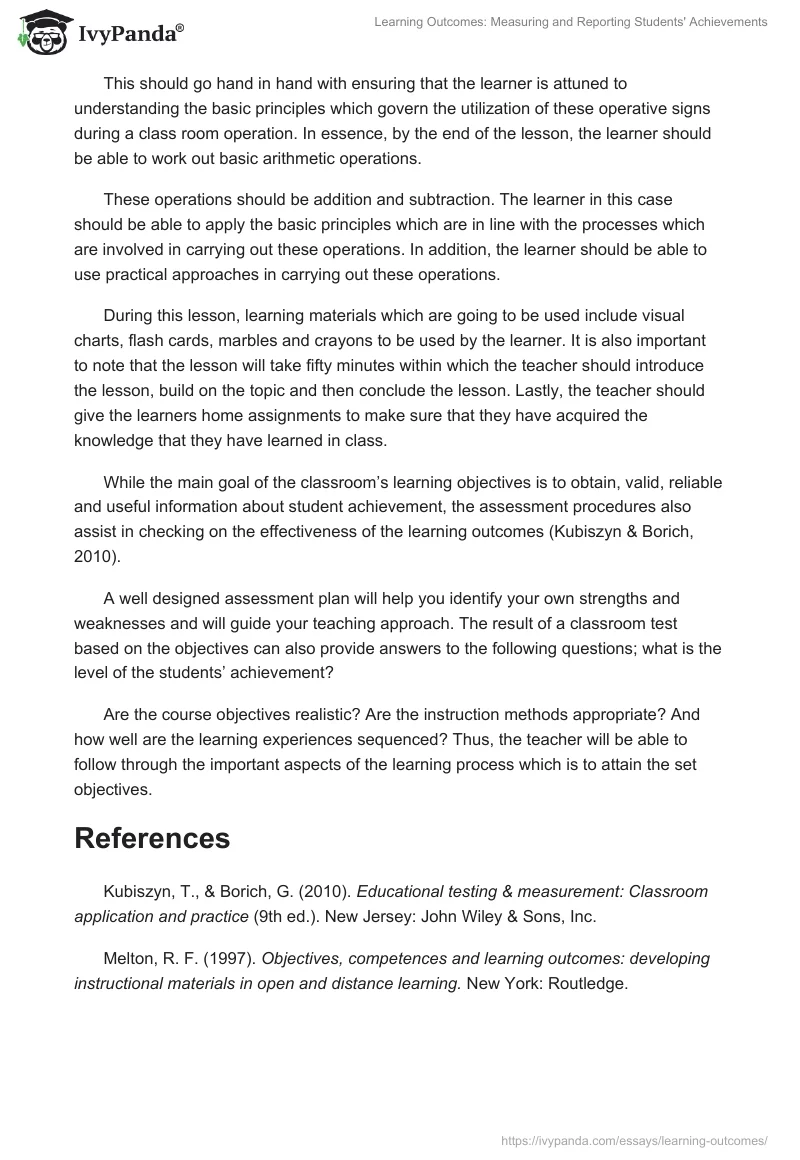Teaching is one of the most interesting professions because it enables teachers to be able to evaluate their performance in class. This essentially leads to the analysis of the teaching objectives which have been set. Learning outcomes are statements of desired outcomes of learning expressed in terms that make it clear how measurements can be achieved.
As such, they act as a logical basis for measuring and reporting on the students’ achievements (Melton, 1997). In particular, they focus attention on what is to be learnt.
Bearing in mind that learning outcomes are a form of the referenced objectives, it follows that they may derive from, and be identified by the type of strategies for objectives and competences that have already been described.It is therefore important for the teacher to be as specific as possible when they are assigning the learning objectives in order to be able to achieve the desired outcomes at the end of the lesson (Melton, 1997).
Learning outcomes should have certain characteristics for one to be effective (Kubiszyn & Borich, 2010). Thus, first of all, this implies that they have to be specific. In this case, the learning outcomes should be described in specific terms and they should guide the teacher in dissemination of knowledge.
Secondly, they should be realistic. In this case, the teacher should ensure that they are within what can be achieved. Thirdly, they should be measurable, as such, the outcomes should be described in terms which are quantifiable. They should also be time bounded, that is, they should be within a given set of time. Having this information in mind, it is important to ensure that the learning and instructional objectives which are set are attainable.
Based on the information provided, the teacher intends to prepare learning instructions for an arithmetic class. In this case, the learning outcomes should ensure that the learner is able to carry out basic arithmetic operations.
This should go hand in hand with ensuring that the learner is attuned to understanding the basic principles which govern the utilization of these operative signs during a class room operation. In essence, by the end of the lesson, the learner should be able to work out basic arithmetic operations.
These operations should be addition and subtraction. The learner in this case should be able to apply the basic principles which are in line with the processes which are involved in carrying out these operations. In addition, the learner should be able to use practical approaches in carrying out these operations.
During this lesson, learning materials which are going to be used include visual charts, flash cards, marbles and crayons to be used by the learner. It is also important to note that the lesson will take fifty minutes within which the teacher should introduce the lesson, build on the topic and then conclude the lesson. Lastly, the teacher should give the learners home assignments to make sure that they have acquired the knowledge that they have learned in class.
While the main goal of the classroom’s learning objectives is to obtain, valid, reliable and useful information about student achievement, the assessment procedures also assist in checking on the effectiveness of the learning outcomes (Kubiszyn & Borich, 2010).
A well designed assessment plan will help you identify your own strengths and weaknesses and will guide your teaching approach. The result of a classroom test based on the objectives can also provide answers to the following questions; what is the level of the students’ achievement?
Are the course objectives realistic? Are the instruction methods appropriate? And how well are the learning experiences sequenced? Thus, the teacher will be able to follow through the important aspects of the learning process which is to attain the set objectives.
References
Kubiszyn, T., & Borich, G. (2010). Educational testing & measurement: Classroom application and practice (9th ed.). New Jersey: John Wiley & Sons, Inc.
Melton, R. F. (1997). Objectives, competences and learning outcomes: developing instructional materials in open and distance learning. New York: Routledge.


